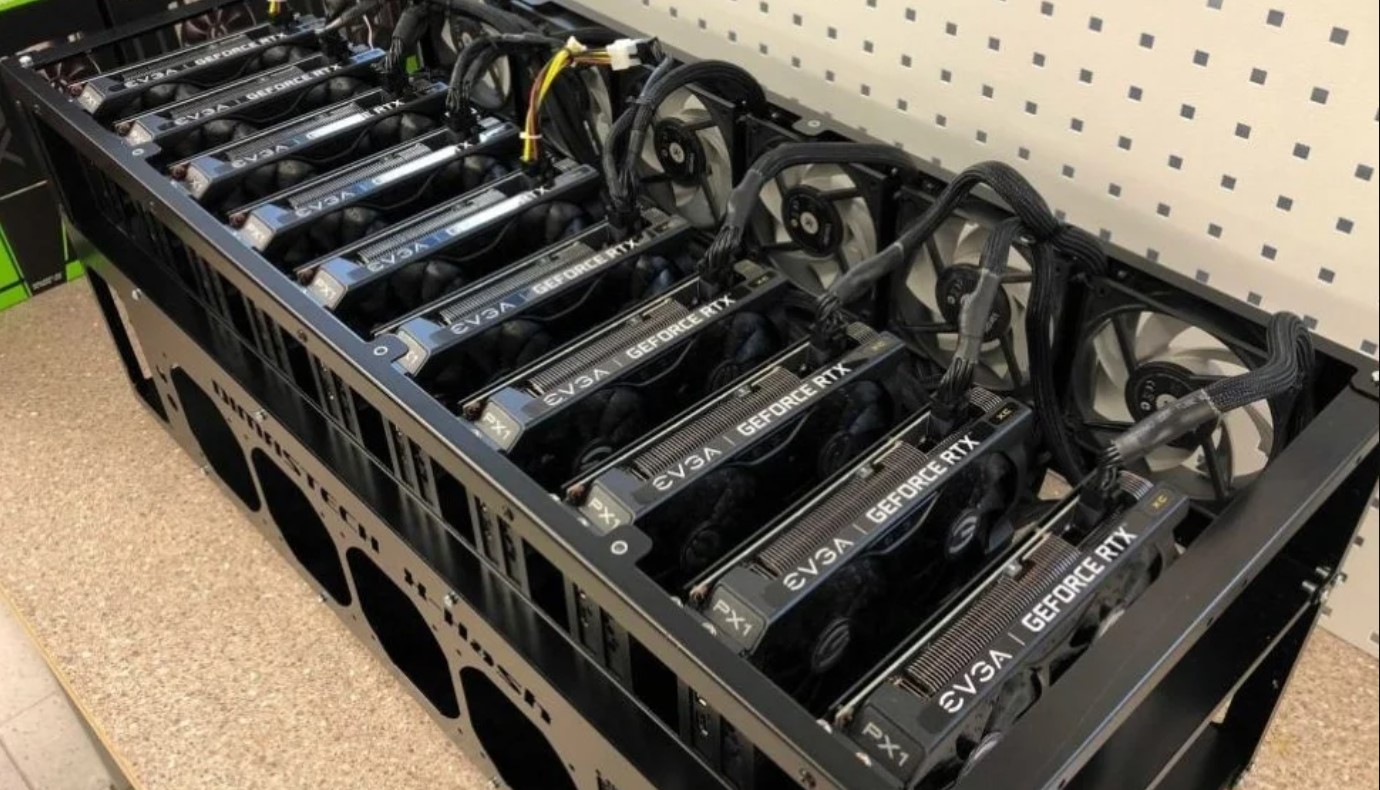
The Ethereum blockchain was launched on July 30, 2015 and has since become the second most important cryptocurrency project. It has a very broad functionality, including not only transactions and rewards for their verification, but also contains the basis for decentralized applications, smart contracts, monetization platforms, crowdfunding initiatives and much more. However, almost from the very beginning of the project's launch, users have been constantly reminded that Ethereum is "about to" switch to the Proof-of-Stake algorithm. What will really happen to the traditional mining model in this case?
How does Ethereum Proof of Stake work?
Ethereum Proof of Stake (PoS) replaces mining with validators who secure the network by staking coins, while Proof of Work (PoW) relies on miners using computing power to solve puzzles.
Let's elaborate on the differences between the two main mining mechanisms. Proof-of-Work requires the user to be online all the time and use 100% of his computing equipment. This is the only way he has a chance to get a reward for the block he completes. The mining device, be it GPU, ASIC, FPGA, is connected to the project's blockchain and monitors and confirms transactions (fund transfers) around the clock. Due to the fact that the network is decentralized, it does not have a single center, and copies are stored on all user devices. This allows for fast and reliable transactions that are "approved" by participants' devices. That is, for example, transfers cannot be cancelled, forged, amount substituted, etc. This mechanism reliably protects participants from abuse.
Most of modern cryptocurrency projects, including Bitcoin, Ethereum, Binance Coin, work exactly on PoW. But there is an alternative method for protecting network participants called Proof-of-Stake. Here is how it works: the user must also be in the network, but transactions are only verified by validators (authorized network members with enough coins in their account, in the case of Ethereum there must be at least 32 ETH). Depending on the network load, the most "weighty" validator or group of validators is chosen for verification. These are the largest coin holders. The rest of the participants are content with only commissions from the transactions made, charged in proportion to their contribution to the network. This will significantly reduce the profitability of the miners, but it will also reduce the power consumption of the network itself by a factor of ten.
Illustrative differences in PoW and PoS mining algorithms
PoS is used today, for example, by such well-known cryptocurrencies as Cardano (ADA), Solana (SOL), Algorand (ALGO), Tezos (XTZ), CELO and a number of other projects. In total, about 70 blockchains out of nearly 6,000 have chosen this particular problem-solving algorithm. PoS was also originally considered as a basis by Ethereum developers.
Ethereum switched to PoS to reduce energy use by 99%, increase scalability, and make the network more eco-friendly and efficient.
One of the central figures in the project remains Vitalik Buterin. He has always been an ardent supporter of the transition, which explains why Ethereum switched to Proof of Stake despite the objections of the community and experts that it may lead to project centralization, user churn, a drop in its reliability and increased interest from financial regulators who are ready to equate tokens with stocks. For example, on September 19, 2016, Buterin appeared at the Devcon2 developer conference in Shanghai and said that the transition to PoS would not happen until the summer of 2017, and that in general it could last until 2020.
On December 10, 2018, Buterin flooded Twitter with a long post proving the benefits of decentralized blockchains in general and those built on PoS in particular. In a March 2019 he posted on Reddit that the transition was not as simple as previously thought. As a result, the transition to the new algorithm was constantly postponed to the end of 2019, then to the winter of 2020, and then there was talk of a hybrid algorithm between PoW and PoS. The main network became surrounded by all sorts of test networks, sidechains, and other tools designed to test the future transition. Primary among these is the Beacon Chain as the basis for the future Ethereum 2.0 main blockchain. It is already available for PoS-style transactions.

Ethereum officially switched to Proof of Stake on September 15, 2022, during the event called “The Merge.”
Finally, on June 2, 2021, Buterin spoke about the challenges of transitioning Ethereum to PoS, including both technical and human factors. Early forecasts had repeatedly postponed the switch, but after years of testing—including the launch of the Beacon Chain—Ethereum successfully completed the Merge on September 15, 2022, now officially the date when Ethereum switched to Proof of Stake.
Phase 0, the Beacon Chain, launched in December 2020 as the first step toward PoS. Earlier predictions suggested Phase 1 and full integration with Ethereum 1.0 might occur in 2021 or early 2022. However, due to the complexity of merging Eth1 and Eth2, developers phased the rollout carefully to ensure security and stability.
The "complexity bomb," which gradually increases mining difficulty to encourage the PoS transition, was postponed multiple times to avoid network disruption. EIP-4345 helped manage these delays, thus resolving uncertainty and completing the network upgrade.
PoS is designed to strengthen Ethereum by lowering costs, improving security, and supporting more users, not to destroy it.
Considering that the epic with the final transition to Proof-of-Stake algorithm is postponed for at least a year, and most likely for a longer period of time, it seems that miners have nothing to fear for now. Video cards can be sold in no hurry as used junk, there is no need to cash out either, and in general to do business as before. Nevertheless, the main concerns of Ethereum miners are as follows:
stopping mining on GPUs and ASICs. The creation and verification of new blocks will be the responsibility of large validator-stackers with 32 or more ETH in their account. At the exchange rate on October 18, this is the equivalent of 121,600 USD;
the danger that the system may have security flaws and be susceptible to hacking;
loss of interest in the coin from some users and reduction of project participants due to the fact that the entry threshold into the blockchain is quite high;
the risk of a hardfork involving disagreeing community members, as already occurred in 2016 with Ethereum Classic;
reduced turnover and, as a consequence, opportunities for additional income. For example, the Ethereum network is already actively "burning" coins. By September 10 alone, nearly 265,000 coins totaling $898 million had been destroyed. This confirms the deflationary nature of the asset and its deficiency.
Of course, the transition also has a lot of advantages, which, in fact, were intended by the developers:
99% reduction in power costs, reduced carbon footprint;
"re-decentralization" - the blockchain will be divided into so-called "shards," that is, autonomous areas that interact with each other and process each "own" transaction;
no hardware acquisition costs;
elimination of problems with scalability and transaction speed (up to 100,000 transactions per second);
lower inflation;
reducing fees to a few dollars versus tens of dollars at present.
After Ethereum’s transition to Proof of Stake, miners could no longer earn rewards on Ethereum and had to switch their GPUs and ASICs to other coins.
Accordingly, it is necessary to distinguish the situation with the future of ASICs and the future of video cards. As devices " tuned" to one algorithm (in this case Ethash), it will be possible to switch to similar projects like Ubiq or Expanse. Yes, the profitability here is not so high, but this is not a verdict even for such narrowly focused devices. Ethereum Classic was also relevant quite recently, but it switched to the improved Etchash algorithm during the Thanos hardfork.

As for video cards, there are no restrictions at all, because they can run on absolutely any available cryptocurrency algorithm. The biggest advantage is that, except for some top cryptocurrencies, GPU owners no longer have to share hashrate with ASICs owners, because they, with few exceptions, are programmed mostly for SHA-256 and Scrypt algorithms (sometimes there is a rarer Kadena). In addition, it is always possible to diversify both cryptocurrency investments and hardware, i.e. to mine the most profitable coins on both ASICs and GPUs.
However, again, the exact timing of Ethereum's full and final transition to PoS is unclear, and it is possible that developers will choose a hybrid algorithm. This does not mean the end of GPU mining, but only requires diversification in blockchain choice. It is still possible to mine Bitcoin, Ethereum Classic, or any of the nearly 6,000 cryptocurrency projects available to anyone.